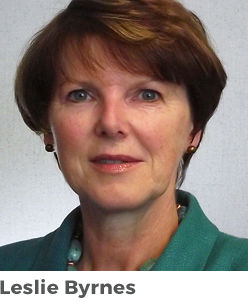Provincial and federal insurance regulators are working together to avoid consumer and regulatory confusion in light of new disclosure information coming out this summer for mutual funds, a conference has been told.
Patrick Déry, superintendent, solvency, of Quebec’s regulator, the Autorité des marchés financiers (AMF), told the annual meeting of the Canadian Association of Independent Life Brokerage Agencies (CAILBA), that new CRM2 requirements coming into effect in July raise questions of potential disclosure gaps between mutual and segregated funds .
“[But] is this a case of regulatory arbitrage?” Déry asked at the March conference in Niagara-on-the-Lake, Ontario. “So far we don’t know.”
 As of this summer, rules come into effect so that mutual fund investors will be able to see the costs associated with each of their accounts, not just in percentage terms, but in dollar amounts. The same will be true of how well their investments have performed. Segregated funds, however, are not subject to the same disclosure rules as mutual funds. (While the rules come into effect July 15, 2016, mutual fund dealers have a year to begin to send the reports to clients.)
As of this summer, rules come into effect so that mutual fund investors will be able to see the costs associated with each of their accounts, not just in percentage terms, but in dollar amounts. The same will be true of how well their investments have performed. Segregated funds, however, are not subject to the same disclosure rules as mutual funds. (While the rules come into effect July 15, 2016, mutual fund dealers have a year to begin to send the reports to clients.)
There have been some suggestions that the discrepancies between the two kinds of funds will cause some advisors to recommend more segregated funds so the client’s statement of charges will be lower.
Déry said provincial regulators have been discussing the CRM2 rules put out by the Canadian Securities Administrators (CSA) both with the federal regulator and the industry in hopes of finding a solution to the potential problem.
Regulatory arbitrage?
To this point, said Déry, he has not seen cases of advisors dropping their mutual funds licences in favour of life licences. “Regulatory arbitrage is more a rumour than a fact [so far],” he said.
While the investment portion of mutual and seg funds are the same, there are guarantees in seg funds, similar to most other insurance products. Many insurance groups have already said the industry is highly regulated already and no additional rules are required.
As well, the Canadian Council of Insurance Regulators (CCIR) said in its winter communiqué that it is in the midst of developing a consultation paper on the regulation of seg funds. “The paper will address differences in the regulatory frameworks for segregated funds and mutual funds, potential for further harmonization, and consider the impact the regulatory framework has on consumer protection and consumer choice,” states the communiqué.
 Leslie Byrnes, vice president, distribution and pensions at the Canadian Life and Health Insurance Association (CLHIA), said when CRM2 is looked at from a consumer’s point of view, it only discloses part of the cost.
Leslie Byrnes, vice president, distribution and pensions at the Canadian Life and Health Insurance Association (CLHIA), said when CRM2 is looked at from a consumer’s point of view, it only discloses part of the cost.
“So we do support greater cost transparency but we think it needs to be more meaningful to the customer,” said Byrnes, who was also speaking at the CAILBA conference. “What we are suggesting is disclosure of full MER as well as any additional costs or fees in the annual statements.”
As it stands, the CRM2 report on charges and compensation does not provide a breakdown of how much is paid to the advisor and how much is kept by the dealer firm. For business reasons, each firm determines this amount differently, based on a number of factors.
For its part, the mutual fund industry in Canada has been saying for some time that consumers expect similar levels of disclosure among similar financial products.
For example, in a June 15, 2015 submission to the Financial Services Commission of Ontario (FSCO), Joanne De Laurentiis, president and CEO of the Investment Funds Institute of Canada (IFIC), said consumers want consistent levels of disclosure among similar products so they can make the appropriate financial decisions that will help them reach their goals.
Market conduct
“Strengthening the co-ordination and information sharing among Ontario’s pension, insurance and securities regulators will help to identify best practices, reduce the risk of regulatory arbitrage and ultimately lead to improved consumer outcomes,” De Laurentiis wrote in the submission.
Market conduct is also a discussion around many insurance regulators’ boardroom these days, said Déry. He said moves by the International Association of Insurance Supervisors (IAIS) to enact some core principles surrounding market conduct is raising the bar on market compliance in large jurisdictions. The last time IAIS held a market conduct check in Canada was in 2013-14, and the country did “OK,” said Déry, especially considering all the different insurance regulators in the country.
Regulators are cognizant that they should not make individual, identical requests to the IAIS on market conduct issues and are working together, he said. Regulators are also sharing with each other how they are dealing with market conduct issues.
 His views were echoed by Richard Tillmann, senior manager, financial services regulatory policy at the Financial Services Commision of Ontario (FSCO). “We want equivalent protection regardless of whether it’s an investment or insurance product. We also support international standards for consumer protection.”
His views were echoed by Richard Tillmann, senior manager, financial services regulatory policy at the Financial Services Commision of Ontario (FSCO). “We want equivalent protection regardless of whether it’s an investment or insurance product. We also support international standards for consumer protection.”
In other regulatory issues raised at the CAILBA conference, so far Saskatchewan is the only province to propose a special licence for managing general agencies (MGAs) for life insurance. However, Déry said the topic is also being discussed in Quebec. “As a regulator, we think this is something that is due to be considered because MGAs are a key aspect of the distribution chain,” he said.
The Saskatchewan bill outlines a new regulatory framework even though MGAs do not supervise advisors because advisors can deal with any number of MGAs.
In the meantime, one regulator praised MGAs for the work they have been doing in conjunction with regulators. Gerry Matier, executive director of the Insurance Council of British Columbia (ICBC), said he has watched MGAs grow over the past 15-20 years and now sees them as key partners in the regulation of insurance agents.
Problem agents
ICBC came out with a draft paper in 2010, then consulted with the industry and MGAs, and ended up publishing a final paper two years later that outlines the roles and obligations of MGAs in B.C.
“We have been very pleased with how that has worked out,” said Matier, noting MGAs have the ability to spot issues early on, such as problem agents.
He said the regulator has brought in a “help line” for MGAs to talk to anyone in the regulator’s office about a potential issue with a problem agent, without divulging the agent’s name. As a result, he said MGAs have come forward and dealt with issues quickly and efficiently.
He said MGAs are in a “challenging situation,” dealing with insurers on the one side and advisors on the other.
He suggested that MGAs go further than what was in the original paper, requiring advisors just setting up a contract with an MGA to disclose any time they are being disciplined or investigated. Privacy laws preclude the regulator from telling the MGA.
“But I strongly recommend that if you have not got such a program in place to make that an issue,” said Matier. “You should empower yourselves and have a good grasp of who you are dealing with.”




